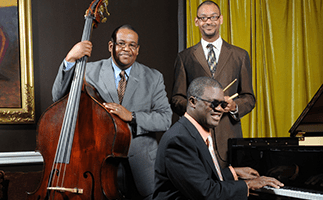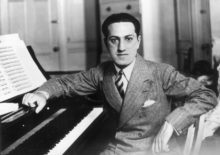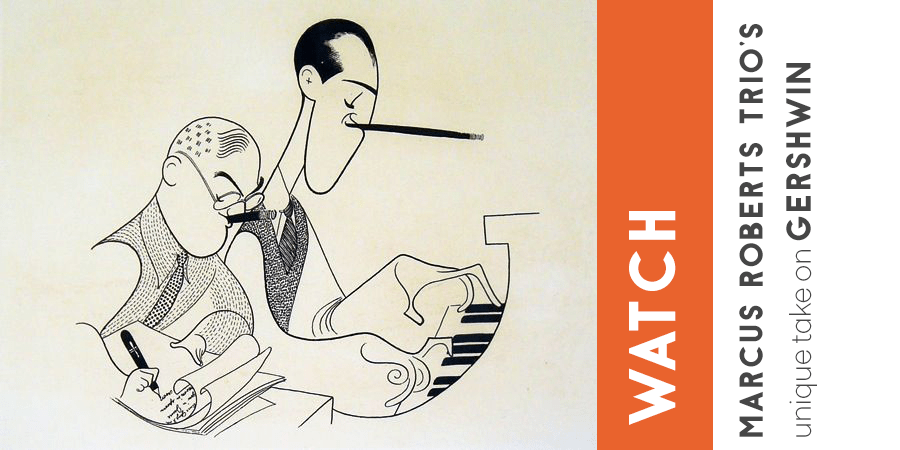
100 Years of Jazz and Symphony
Syncopate, Bounce, and Swing!
In Rightness in the Rhythm we will explore the connections between jazz and classical…from ragtime to Rhapsody in Blue and beyond! Special guests Marcus Roberts Trio joins Chicago Sinfonietta with their unique take on Rhapsody in Blue that is injected with driving rhythm and stunning improvisation. Check out the digital guide to learn more about the artists and music featured on the program!
GUEST AND FEATURED ARTISTS | COMPOSERS |
LISTENING GUIDE | BRIDGE |



The Marcus Roberts Trio is known for its virtuosic style and entirely new approach to jazz trio performance. While most jazz trios have the piano front and center, all members of the Marcus Roberts Trio share equally in shaping the direction of the music by changing its tempo, mood, texture, or form at any time. And they do this with lightning quick musical reflexes and creative imaginations. The trio is known for having almost telepathic communication on the stage. And more than a few concert goers have been heard to say that it sounds like a lot more than three people up there on the stage!
The Marcus Roberts Trio believes in ‘letting the music take over’ and the result is a powerfully rhythmic and melodic sound that is filled with dynamic contrast. One of the most enjoyable aspects of watching this trio perform is that it is so evident that these three musicians are really having fun playing together.


Deanna Tham, 16/17 Chicago Sinfonietta Assistant Conductor
Project Inclusion Conducting Freeman Fellow, Deanna Tham is the newly appointed Music Director of the Louisville Youth Orchestra. She was previously the Music Director of the Boise Philharmonic Youth Orchestra. She has additionally conducted the Boise Philharmonic and Ballet Idaho, and Opera Idaho. Tham most recently worked with renowned conductors Marin Alsop and James Ross at the Cabrillo Contemporary Music Festival. Tham has served as the cover conductor for the Cleveland Orchestra Youth Orchestra, where she also received a Professional Studies Certificate from the Cleveland Institute of Music in Orchestral Conducting studying with Maestro Carl Topilow. She has had her work with the National Music Festival and Maestro Richard Rosenberg featured on National Public Radio as well as American Public Media working with some of the top professional musicians and teachers from around the world.




Scott Joplin
(1867 - 1917) An African-American composer and pianist, Joplin achieved fame for his ragtime compositions and was dubbed the "King of Ragtime Writers". During his brief career, he wrote 44 original ragtime pieces, one ragtime ballet, and two operas. Joplin's second opera Treemonisha (1911), was intended to be both a serious opera in the European tradition, and an entertaining piece of music. Sadly, the opera was virtually unheard of until its first complete performance in 1972.
Michael Abels
(1962) An American composer, Abels was born in Phoenix, Arizona, and studied at the University of Southern California. Primarily a composer of large forms, Abels has applied his skillful compositional approach to over 20 orchestral works. Always a thoughtful communicator, Abels cleverly reinvents classical styles while adapting popular idioms. Abels has been described as a composer with a gift for “[juxtaposing] elements unleashed in an irresistible display of orchestral color” (Cleveland Plain Dealer), who possesses a “keen ear and a deft ability to adapt structural elements from popular music into the symphonic idiom,” (Houston Chronicle).
George Gershwin
(1898 – 1937) An American composer and pianist, Gershwin's compositions spanned both popular and classical genres, and his most popular melodies are widely known. Among his best-known works are the orchestral compositions Rhapsody in Blue (1924), An American in Paris (1928), and the opera, Porgy and Bess (1935).





